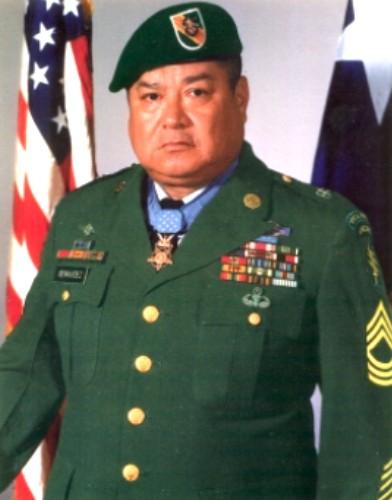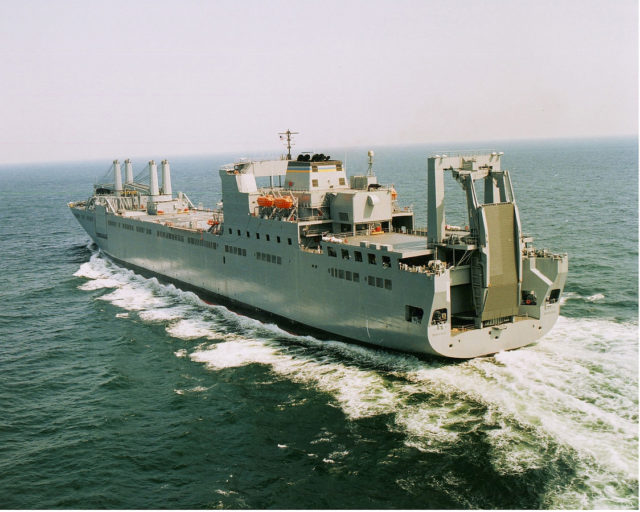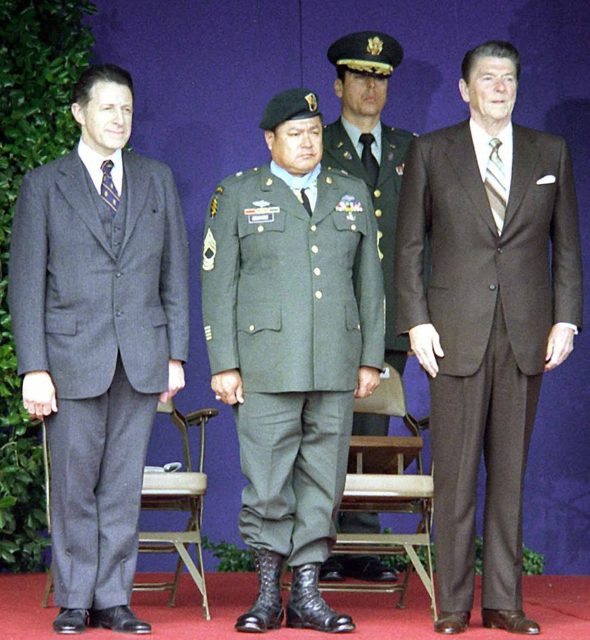Roy Benavidez was born Raul Perez Benavidez on 5 August 1935 in a small Texan town. His father, a Mexican farmer, died of tuberculosis when Roy was two years old.
Three years later, his mother passed away for the same reasons. Roy and his younger brother were taken by their relatives. Roy attended school sporadically because he had to work in order to support both himself and his brother. Aged 15, he dropped out of school to work full-time.
In 1952, 17-years-old Roy Benavidez enlisted in the Texas Army National Guard, and three years later switched to active duty. In 1959, after completing airborne training, he was assigned to the 82nd Airborne Division at Fort Bragg, North Carolina.
He proceeded to join the elite Army Special Forces and became part of the highly classified Studies and Observations Group which conducted covert unconventional warfare operations prior to and during the Vietnam War.
In 1965, while on a mission in South Vietnam, he stepped on a land mine and got seriously injured. His doctors concluded that he would never walk again. Against all odds – and doctors’ instructions – Roy decided not to give up.
Every night, he would sneak out of his hospital bed, and using his chin and elbows crawl to a nearby wall, and starting from wiggling his toes attempted to get up.
He repeated this ritual for more than a year, supported by his fellow patients. The nights of sweat and tears ended with him walking out of the hospital in July 1966. No one would have guessed that this was just an introductory achievement on Benavidez’s part.

Six months later he was back in South Vietnam. On 2 May 1968, Roy was in his base at Loc Ninh, near the Cambodian border. At 1:30 p.m. they received an SOS call from the radio.
A 12-man Special Forces patrol was spotted by an infantry battalion of the People’s Army of Vietnam. Around a thousand of them. Three helicopters unsuccessfully attempted to rescue them, only to return damaged and with injured men.
Sergeant Benavidez volunteered to take part in another attempt. As President Ronald Reagan would later comment, if what ensued were ever to be filmed no one would believe the story. The helicopter was flying over a dense jungle and while hovering some 10 feet off the ground, Benavidez jumped out, carrying only a medic bag and a knife.
He ran 75 yards towards his wounded comrades and in the process got hit by an AK-47 and then again by shrapnel from a hand grenade. When he reached his destination, his face, head and right leg were wounded. Four of his mates were already dead, while the remaining eight were injured and unable to move. Despite excruciating pain, he dragged them to the nearby rescue helicopter. With the mission almost fulfilled, he ran back one last time to pick up the body of the dead team leader and some classified documents.
The Vietnamese intensified fire and he was shot in the abdomen, and once again hit by grenade shrapnel. Almost simultaneously, the aircraft pilot was killed and the helicopter crashed.
With his intestines exposed, Benavidez picked up the documents and ran back to the wreck in order to help out the wounded and attempt to organize them into a defensive perimeter. It proved a success. He managed to call for tactical air strikes and for another rescue helicopter to be sent.
While providing first aid to one of his comrades, he got shot once again. He kept going. The rescue helicopter arrived and he began ferrying the soldiers to the craft. In the middle of it all, as he was carrying a severely injured soldier, he was clubbed down from behind by a seemingly dead NVA soldier.
With jaw broken, he was on a brink of dying by the enemy’s bayonet. He quickly grabbed the blade, pulled the enemy soldier and stabbed him with his bowie knife. But, not before the bayonet jabbed right through his left forearm.

With everyone on board, he picked up an AK-47 and killed two more NVA soldiers before finally letting his crew members pull him into the helicopter. The six-hour fight was finally over. By the time they got to the base, Benavidez’s body was not moving.
He was pronounced dead and placed in a plastic bag. Luckily, one of his friends recognized him and immediately called the doctor. The bag was rapidly filling with blood. With 37 bullet, shrapnel and bayonet wounds, eyes caked in blood, and no obvious heartbeat, the doctor concluded that Benavidez is indeed dead. But he was not. Unable to move or speak, he managed to do only one thing – spit into doctor’s hovering face.
He was immediately evacuated back to his old Booke Army Medical Centre, where he recovered. For his immense bravery, he was awarded the Distinguished Service Cross and four Purple Hearts.
In 1973, details of this event broke out an initiative was taken to award Benavidez the highest honor of all – the Medal of Honor. Since the time limit had already expired, the Congress voted to exempt him from the rule. But, the rules also stated that he needed a living witness of the incident. Believing that by then all of the witnesses died, Benavidez gave up.

Fortunately, Brian O’Connor, the former Benavidez’s radioman was among the survivors. He was on a holiday in Australia when he read about his comrade’s case in the papers.
He instantly contacted him and provided the commission with the detailed account of that horrific day. On February 24, 1981, President Ronald Reagan presented Sergeant Roy Benavidez with the Medal of Honor.
Upon retiring from the military, Roy toured the schools and military facilities, promoting education and fighting for the rights of disabled veterans.
He wrote three autobiographical accounts of his life. On 29 November 1998, Roy Benavidez suffered respiratory failure and complications of diabetes. He died between the well-known walls of the Brooke Army Medical Centre. He was buried with full military honors.
